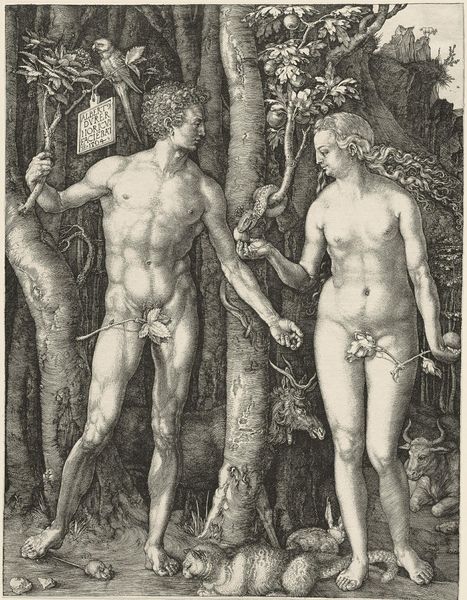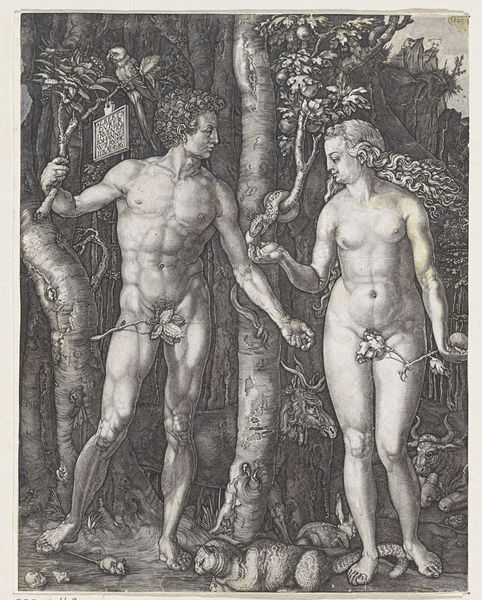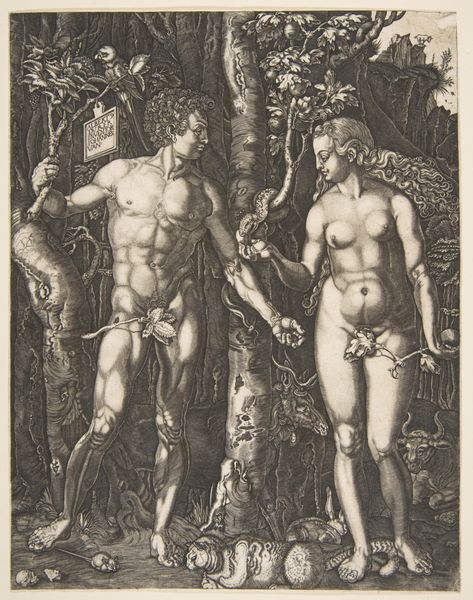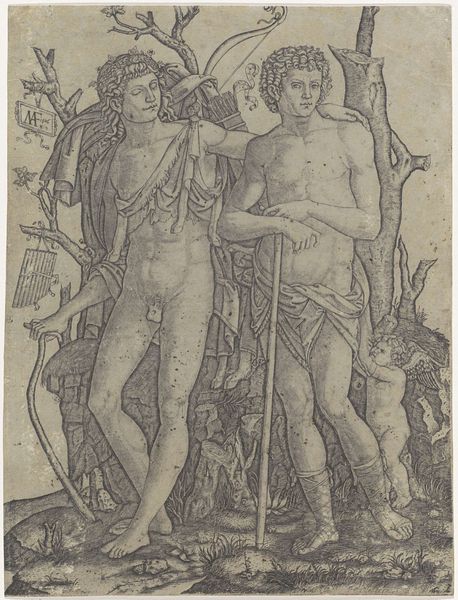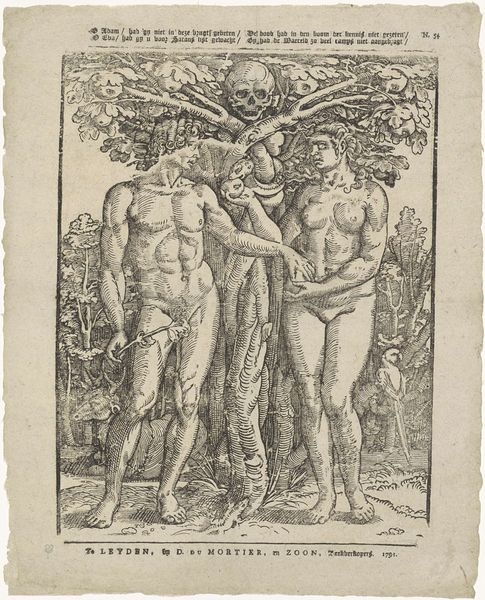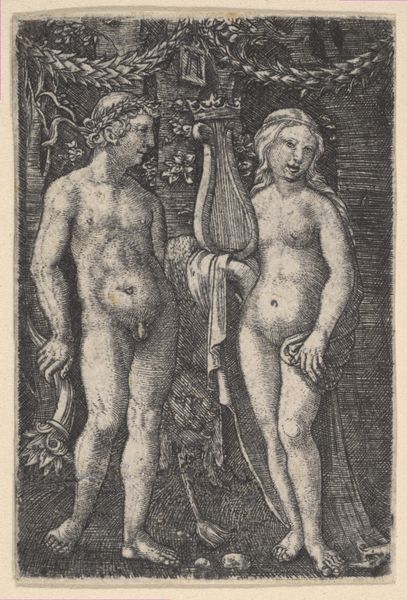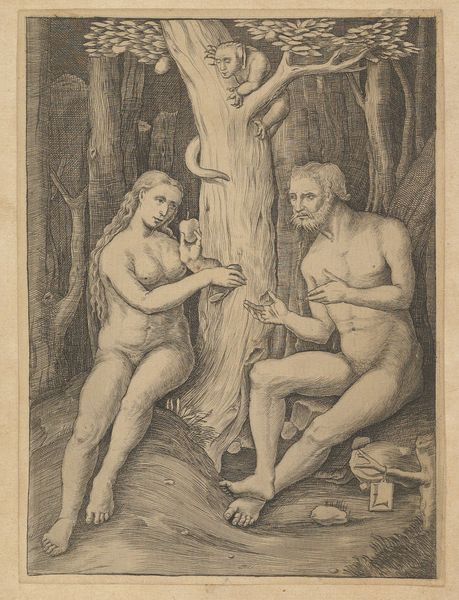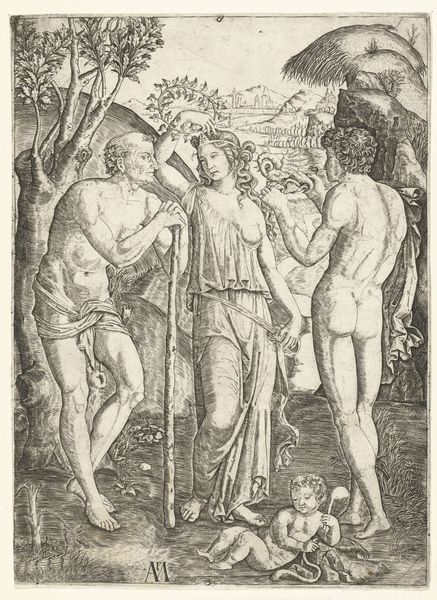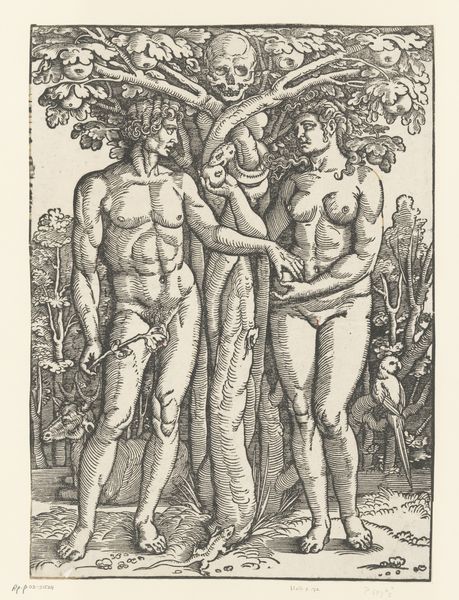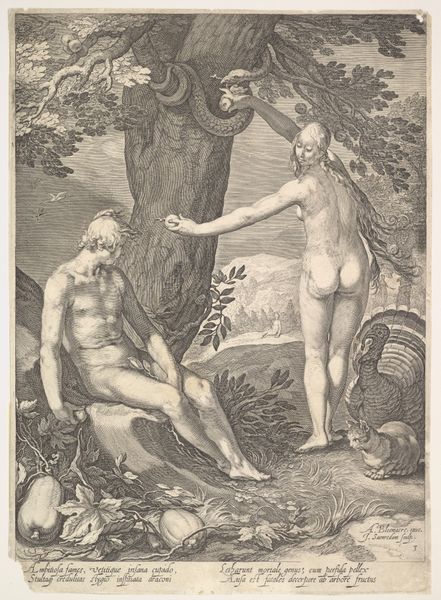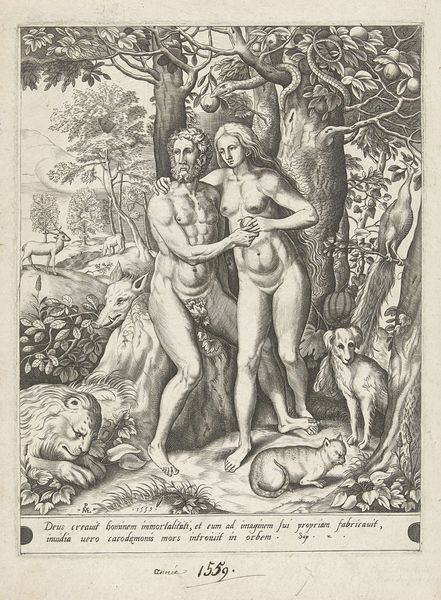
Adam en Eva bij boom van kennis van goed en kwaad in paradijs tijdens zondeval 1504 - 1536
0:00
0:00
print, engraving
#
ink drawing
#
allegory
#
pen drawing
# print
#
figuration
#
form
#
line
#
history-painting
#
northern-renaissance
#
italian-renaissance
#
nude
#
engraving
#
realism
Dimensions: height 245 mm, width 190 mm
Copyright: Rijks Museum: Open Domain
Curator: Look at this captivating print, “Adam and Eve at the Tree of Knowledge of Good and Evil in Paradise During the Fall," realized sometime between 1504 and 1536. The artist is Marcantonio Raimondi, and it's currently held here at the Rijksmuseum. Editor: What strikes me immediately is its almost unsettling clarity. The figures are rendered with such starkness against the dense, shaded forest—it feels less idyllic and more…foreboding. Curator: Indeed. Consider Raimondi's technical skill, particularly the dense network of lines and hatching that articulate form. Look at the interplay between light and shadow; the musculature of Adam, the gentle curve of Eve’s torso. It is through line that space, depth and form are all articulated here. Editor: The symbols speak volumes, naturally. The parrot, often associated with mimicry and false wisdom. And the other creatures at their feet: the ox, elk, and even the mouse have a role to play, do they not? In essence, they're showing the changing nature, the loss of innocence. Curator: Quite right. We have the serpent coiled around the tree offering the apple. The placement and treatment of the serpent functions compositionally to connect the two central figures together as partners in transgression. This linear compositional feature serves as a visual device to underscore their shared agency in this scene. Editor: This engraving depicts not merely a story but the story of Western humanity's fundamental rupture. Eve's receptivity, Adam’s willingness... all the complexities of choice and consequence wrapped into a single scene. It's the symbolic hinge on which much of our culture swings. Curator: Notice also the hyper-realistic detail throughout; such commitment to line in this case highlights a commitment to realism throughout the entirety of the composition, yet such commitment does little to soften what remains to the modern eye a deeply troubling, albeit captivating image. Editor: Seeing it through the lens of symbolic traditions provides an entry point. But understanding what this means for different audiences over time would greatly change how viewers will understand Raimondi’s project. Curator: Absolutely. It's precisely through the convergence of such diverse insights, I believe, that we unlock the power this work holds. Editor: Precisely! I agree completely; let’s allow its legacy of interpretations inspire even greater engagement.
Comments
No comments
Be the first to comment and join the conversation on the ultimate creative platform.
